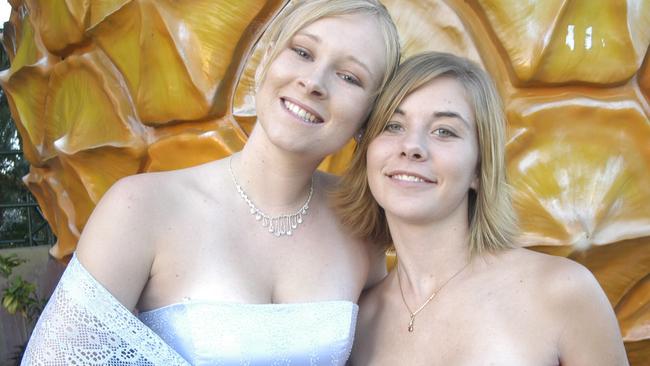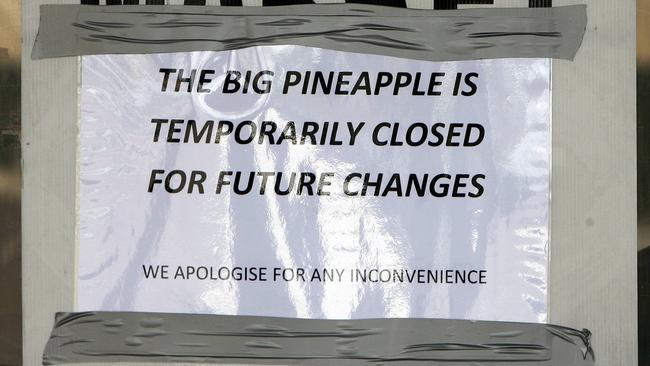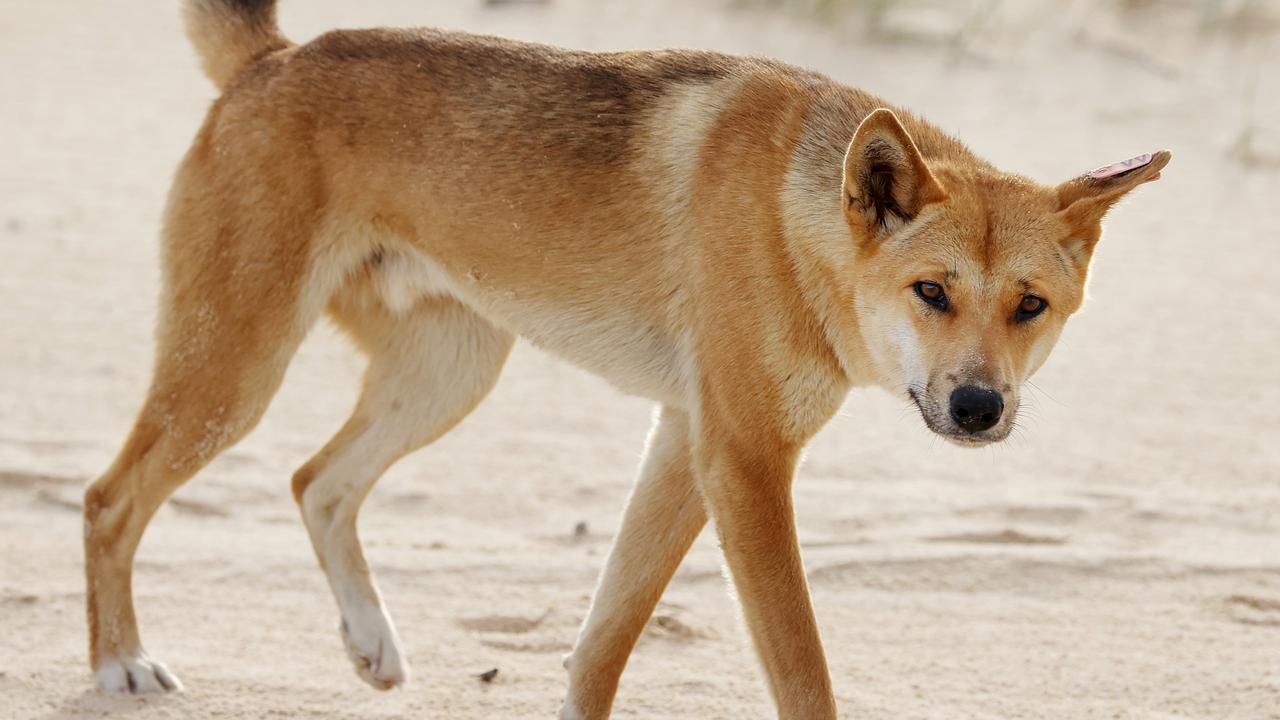Big Pineapple on Sunshine Coast celebrates 50-year anniversary despite several setbacks
All Sunshine Coast locals have their own memories of the Big Pineapple, but not everyone knows about its rocky past. See how the icon evolved and the exciting plans for its future.

Sunshine Coast
Don't miss out on the headlines from Sunshine Coast. Followed categories will be added to My News.
Just like the fruit itself, the Big Pineapple was built to last.
What was first a bustling stop on the Bruce Highway soon became an Australian icon that not even a devastating fire, destructive cyclone or failed business attempt could bring down.
August marks the 50-year anniversary of the 16m-high landmark which was opened in 1971 by Bill and Lyn Taylor as part of the pineapple farm itself.

Formerly known as the Sunshine Plantation, the site has changed hands several times but the new owners say they have a plan to ensure it thrives for the next 50 years.
Here’s how the tourism attraction put the town of Woombye on the map.
Visitors come from far and wide for taste of pineapple
You’d be hard pressed to find a Sunshine Coast resident who doesn’t have their own story about the Big Piney.
In its heyday the site would welcome about one million visitors a year, a figure which rivals that of the Gold Coast’s biggest theme parks now.
Greg Bourke, who works as part of the site’s management team, has fond memories of when the “Big Thing” was in its prime.

“I remember the carpark being full and long queues to go into the Big Pineapple, long queues to go into what’s called the Sunshine Plantation building,” he said.
“(There were) really happy kids with these big parfaits and ice cream all over their face.”
Back when Nambour was considered the capital of the Coast, Mr Bourke said the region’s lack of development meant the Big Pineapple was the number one spot for a party.

“It was the only place where you could hold a function of any decent size, so I think a lot of us went to school formals and weddings there,” he said.
“It was a different era, definitely.”
How a fire first threatened its survival
The Big Pineapple’s first major hurdle came when a burglar broke into the site in the early hours of September 11, 1978.
A fire was lit and spread quickly through the building which housed the Sunshine Plantation restaurant and tropical market, due to the straw decor and fittings.
“The place was decimated and was shut for a long time after that,” Mr Bourke said.

Property worth an estimated $250,000 was lost, however a determined community worked together to bring it back to life and by December of the same year, a new Tropical Village complex was opened by the Governor-general.
Mr Bourke said it was a blessing the entire site wasn’t destroyed.
“We’re just grateful that the pineapple itself, the fibreglass structure wasn’t damaged,” he said.
A destination fit for royals
Arguably the most notable event from the Big Pineapple’s past was when Princess Diana and Prince Charles came to visit during their Australian tour in 1983.
Waves of residents lined the streets for a glimpse of the royal couple who were treated to a buffet luncheon and hopped aboard the venue’s famous train.

The carriage the pair rode in has now been restored to its former glory after sitting in storage for two decades.
Mr Bourke said the occasion was a huge point of pride for the Sunshine Coast.
“I think the fact that it almost demanded a royal visit just goes to show it started as a modest idea on the side of the road at Woombye and what it became,” he said.
“That was the magnetism of the place.”
Rocky past leads to regrettable closure
The landmark may have recovered from the impact of the fire but it wasn’t the only bump in the road to threaten its survival.
“The Big Pineapple 50 years on has gone through a lot of scenarios that I think would’ve broken most businesses,” Mr Bourke said.
A mini tornado in 1991 damaged the Tomorrow’s Harvest ride, forcing it to close for seven weeks for temporary repairs, including the roof of the pineapple itself.

Mr Bourke said the redirection of the Bruce Highway also caused a significant drop in visitor numbers to the roadside attraction.
“Once all that traffic was taken away, a lot of the reasons for stopping at Woombye were taken away,” he said.
The site’s financial woes continued and by 2003 it owed the Australian Taxation Office $500,000 and faced the possibility of sale or closure.
It ultimately went into receivership in 2009 and ironically was heritage-listed the same year before officially closing in October 2010.
“It was a failed business at one point,” Mr Bourke said.
“It’s taken a few hits, but it’s still going.”
The path to returning to its former glory
Many thought the Big Pineapple’s closure had defeated the icon for good but in late August 2011 the complex and its surrounding farmland was sold to a consortium.
The purchase prompted a resurgence of the family attraction with the new owners “pumping” money into the site.
Mr Bourke said the launch of the Big Pineapple Music Festival helped a younger audience connect with the landmark, as well as the popular Wildlife HQ zoo and the fairly new TreeTop Challenge.

“When Midnight Oil for instance were having their reunion tour in 2017, they couldn’t find anywhere suitable on the Sunshine Coast apart from the Big Pineapple fields, as we call it,” he said.
“We’ve had headlines that would be the rival of any other festival, any metropolitan festival.”
The site is also home to yoghurt producer COYO, Diablo Ginger Beer and distillery Sunshine and Sons.
What comes next for the Big Pineapple
Mr Bourke said co-owners Peter Kendall and Brad Rankin and the entire team were determined to establish the Big Pineapple as a bustling hub once again.
While there was “still a long way to go” in terms of bringing in the same foot traffic, he said the Sunshine Coast Council’s approved master plan would set up the site for the next 50 years.
In 2019 it was revealed the $150m development would consist of several stages, including onsite glamping and other accommodation, a possible eco resort and wellness centre, onsite food manufacturing and more.

Mr Bourke even floated the idea of the icon becoming the mascot for the 2032 Olympics in Queensland.
“It’s green and gold, it’s a hearty type of plant, it’s hard to kill,” he said.
“We like that idea of the battler and it’s quintessentially Queensland.”
He was confident the landmark would continue to thrive and welcome locals and tourists alike to the Woombye grounds for decades to come.
“We really want the Big Pineapple to be a point of pride,” he said.
“The Big Pineapple will be here for another 50 years.”





